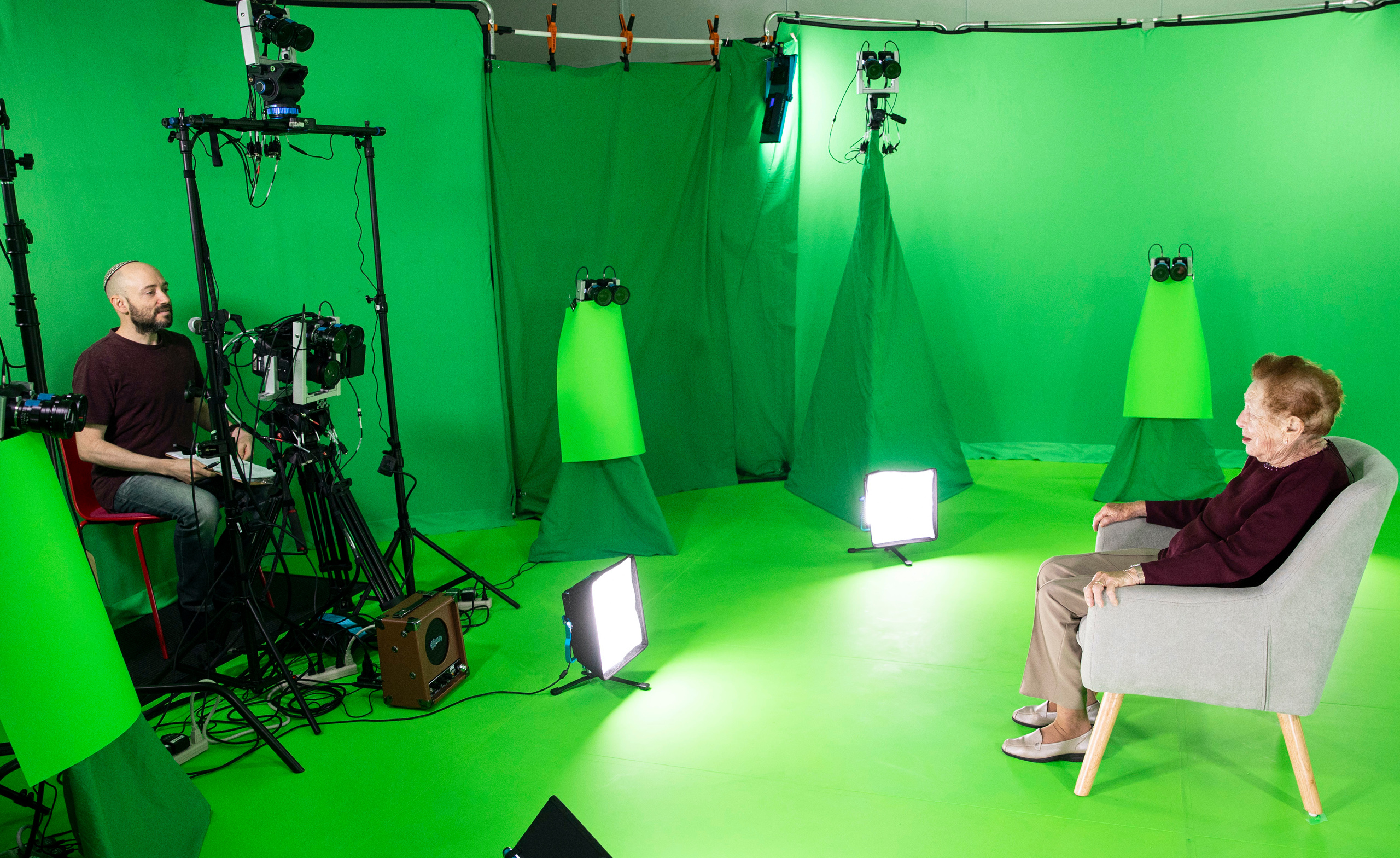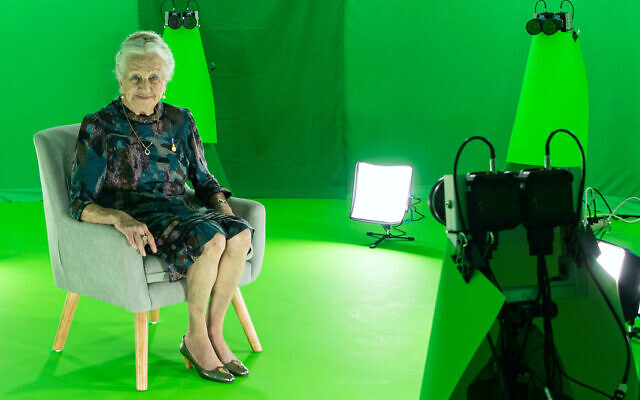Using high-tech to preserve Shoah memory
Advanced hologram display of six survivors will let visitors ask questions and have them answered in real time.
CUTTING-edge 3D filming techniques, artificial intelligence (AI), and a project budget of almost $3 million will enable the Sydney Jewish Museum (SJM) to record and present testimonies by six Holocaust survivors in a hologram-style display so advanced, it will let visitors ask questions, and have them answered from the footage in real time.
The SJM announced its long-term Dimensions in Testimony project – in collaboration with the University of Southern California’s (USC) Shoah Foundation – in the week preceding International Holocaust Remembrance Day (January 27), as a means to allow future generations to have life-like conversations with Australian Holocaust survivors.
The featured survivors, all with a long-time association with the SJM as volunteer speakers and guides, are Eddie Jaku (100), Olga Horak (93), Kuba Enoch (93), Yvonne Engelman (92), Paul Drexler (82) and Francine Lazarus (82).
They will be filmed over a period of five days using a custom-made rig of 23 cameras supplied by the USC Institute for Creative Technologies, and their answers to 1000 questions will later be cut into short clips, before being edited in a process that requires such precision that it will take almost one year to create the final product.
The resulting exhibit will use next-generation processing software to interpret each visitor’s spoken questions, and built-in AI technology will continue to “learn” and become more efficient with each question asked.
SJM CEO Norman Seligman said almost 60,000 visitors – half of whom are school students – visit the museum in a typical year, and feedback shows the most powerful experience is meeting a Holocaust survivor.
“For many years we have been planning and preparing for a future when, sadly, we will no longer have survivors with us,” Seligman said.
“The Dimensions in Testimony initiative is the most exciting, and definitely the most expensive, single project ever undertaken by the museum in this regard, and will bring the voices of the survivors and their stories to life.
“The images are so life-like, and the responses so accurate, that one soon forgets that one is not talking to a real person.
“Our belief is that it will continue to inspire future generations to learn from the Holocaust and to take a stand against intolerance of any form.”

Seligman added the decision of who to include in the project was extremely difficult to make.
“Working with the USC Shoah Foundation, we considered survivors who have differing Holocaust and postwar experiences, and [also] their age during the Holocaust.
“We then decided on the six survivors whose history we believe allowed for a broad range of experiences to be recorded.”
SJM president Professor Gus Lehrer said, “This project is part of the museum’s program, initiated by survivors in the 1980s, to teach personal responsibility through a knowledge of the Holocaust.”
Horak – who was transported to Auschwitz in 1944 and Bergen-Belsen in January 1945 at the age of 17 – said she feels “honoured and humbled” to be involved as an interviewee in the project.
“We can’t let testimonies fade into oblivion,” Horak said.
“It’s important for people to learn about history from those who experienced it, [and] there will come a day when there are no longer Holocaust survivors alive to tell their stories.
“History will always be available to read in textbooks, but the memory of witnesses is more exact than the history written by those who were not there.”
Project coordinator Shannon Biederman said “to film our survivors in 360 degrees is an incredible opportunity to preserve these important histories for posterity”.
“We have already recorded some amazing material, and are looking forward to creating these interactive biographies.”
Funding so far for the project has been provided in part by the Pears Foundation, Louis F Smith and the Goldrich Family Foundation, and other partners include Illinois Holocaust Museum and Education Centre, and CANDLES Holocaust Museum.


comments